




When it comes to doing laundry, fabric softener is often an essential product for many people. It helps to make clothes and towels feel softer, reduces static cling, and leaves a pleasant scent. However, fabric softeners contain a range of chemicals that some people may want to avoid. Luckily, there is a natural alternative that can provide similar benefits without the chemical additives: vinegar.
Vinegar has long been used as a natural cleaning agent and deodorizer, but it can also be a great addition to your laundry routine. When used as a fabric softener, vinegar helps to remove soap residue, making clothes feel softer and more comfortable to wear. Additionally, vinegar can help to reduce static cling, which is especially beneficial during the dry winter months when static is more common.
Another advantage of using vinegar as a fabric softener is that it is a cost-effective option. A small amount of vinegar can go a long way, and it is much cheaper than commercial fabric softeners. Not only does this help to save money, but it also reduces the amount of single-use plastic bottles that end up in landfills.
While vinegar has many benefits as a fabric softener, there are also a few potential drawbacks to consider. Firstly, vinegar does not have the same scent options as commercial fabric softeners, so if you enjoy a specific fragrance, you may be disappointed. Additionally, vinegar may not be suitable for all types of fabrics, so it is important to do a patch test before using it on delicate or specialty items. Lastly, vinegar can have a strong odor when wet, but this dissipates as the laundry dries.
In conclusion, using vinegar as an alternative to fabric softener can be a great option for those looking to avoid chemicals and save money. It helps to make clothes feel softer and reduces static cling, all while being a natural and cost-effective choice. However, it is important to consider the scent limitations and potential compatibility issues with certain fabrics. Overall, vinegar is a versatile household product that can have many benefits in your laundry routine.
What is Vinegar and How Does it Work on Fabrics?
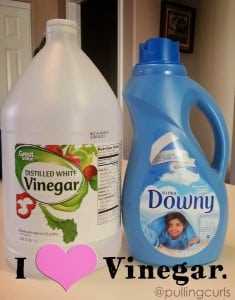
Vinegar is a liquid made from the fermentation of ethanol in a process that produces acetic acid. It has a sour taste and is commonly used in cooking, cleaning, and various household applications.
When it comes to fabric, vinegar can be used as a natural alternative to commercial fabric softeners. It works by helping to break down any mineral deposits or detergent residues that may be left on the fabrics after washing. This allows the fibers of the fabric to become softer, resulting in a smoother feel.
Vinegar also has antistatic properties, which can help reduce static cling in fabrics. This can be particularly useful for clothing items, such as dresses or skirts, that tend to generate static electricity.
Additionally, vinegar can act as a natural deodorizer for fabrics. It can help remove any unpleasant odors that may be present, such as those from sweat or mildew.
It is important to note that vinegar should not be used on all types of fabrics. It is generally safe for use on cotton, linen, and synthetic fabrics. However, it is not recommended for use on delicate fabrics, such as silk or wool, as it may cause damage.
To use vinegar as a fabric softener, simply add a small amount (usually about 1/4 to 1/2 cup) to the rinse cycle of your washing machine. Alternatively, you can add vinegar to a spray bottle and spritz it onto your clothes while they are still damp.
In conclusion, vinegar can be an effective and natural alternative to fabric softeners. It helps soften fabrics, reduce static cling, and remove odors. However, it is important to use vinegar safely and avoid using it on delicate fabrics.
Pros of Using Vinegar as a Fabric Softener
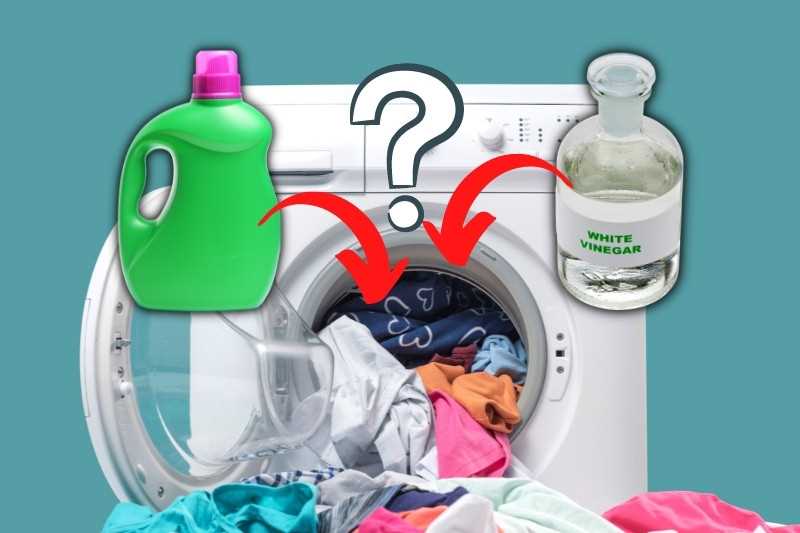
- Natural and eco-friendly: Vinegar is a natural and eco-friendly alternative to conventional fabric softeners. It is non-toxic and biodegradable, making it a great choice for those looking to reduce their environmental impact.
- Budget-friendly: Vinegar is much cheaper compared to store-bought fabric softeners. It is a cost-effective solution that can help you save money on laundry expenses.
- Hypoallergenic: Vinegar is a hypoallergenic option for those who have sensitive skin or allergies. Unlike commercial fabric softeners that may contain chemical irritants, vinegar is a gentle and natural option.
- Removes odors: Vinegar helps neutralize and remove unpleasant odors from clothes, leaving them fresh and clean. It can be especially effective in removing stubborn smells from towels, gym clothes, or pet bedding.
- Softens fabrics: Vinegar acts as a natural fabric softener by helping to loosen fibers and reduce stiffness. It leaves clothes feeling softer and more comfortable to wear.
- Reduces static: Static cling can be a nuisance, especially during the colder months. Vinegar helps reduce static electricity in clothes, preventing them from sticking together and causing static-related issues.
- Preserves colors: Vinegar can help preserve the colors of your clothes by preventing color fading and bleeding. It can be particularly beneficial for vibrant or dark-colored garments.
Cons of Using Vinegar as a Fabric Softener
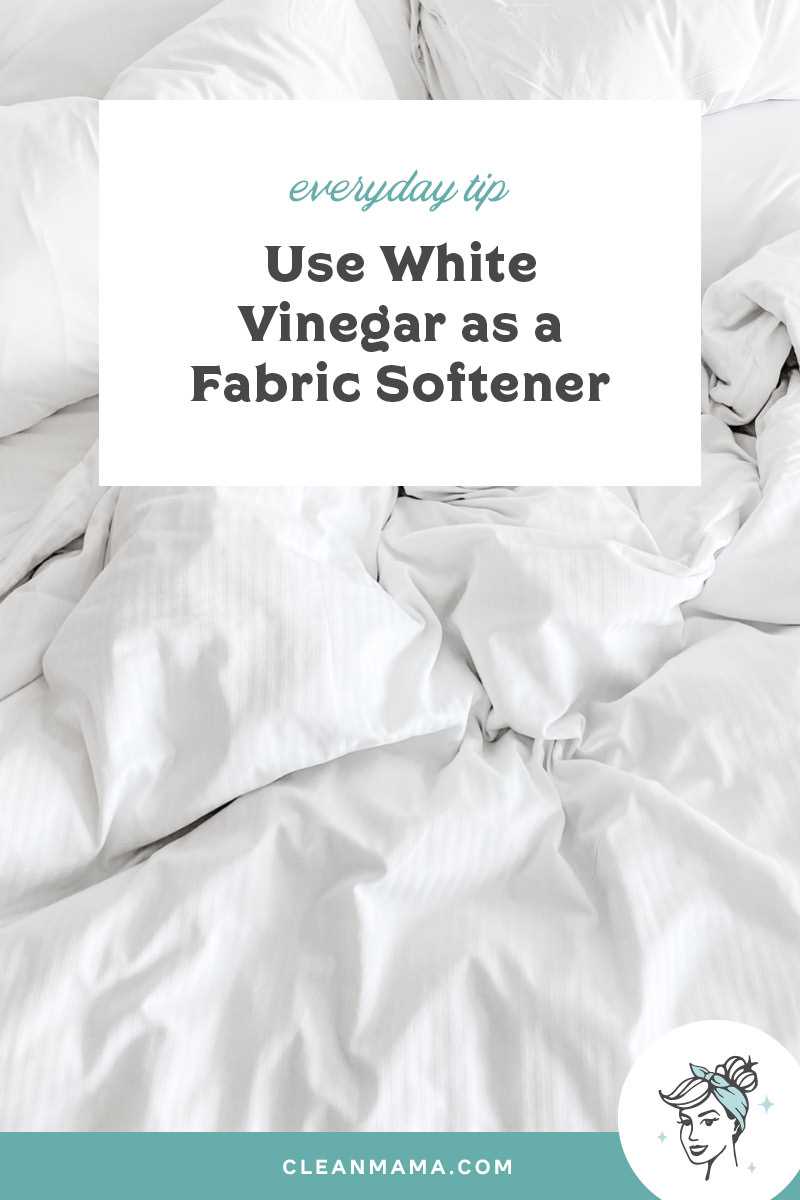
- Strong Smell: One of the drawbacks of using vinegar as a fabric softener is its strong smell. While the smell may dissipate once the laundry is dry, many people find it unpleasant while the clothes are still wet.
- Possible Color Fading: Vinegar is acidic, and prolonged exposure to certain types of fabric can potentially cause color fading. It is recommended to do a patch test on a small, inconspicuous area of the fabric before using vinegar as a fabric softener on a larger scale.
- Stains and Residue: In some cases, using vinegar as a fabric softener may leave stains or residue on clothing. This can happen if the vinegar is not properly diluted or if it reacts with certain types of fabric or dyes.
- Limited Softening Power: While vinegar can help make clothes feel softer, it may not provide the same level of softness as commercial fabric softeners. This can be a disadvantage for those who prefer a very soft and fluffy texture.
- Not Suitable for All Fabrics: Vinegar may not be suitable for use on certain types of fabrics, such as delicate or sensitive materials. It is important to check the care labels of your clothing and follow any specific instructions provided by the manufacturer.
While vinegar can be a cost-effective and environmentally friendly alternative to traditional fabric softeners, it is important to consider these potential disadvantages before deciding to use it. It may be beneficial to do a small test before using vinegar as a fabric softener on a larger scale to ensure compatibility with your specific clothing items.
How to Use Vinegar as a Fabric Softener
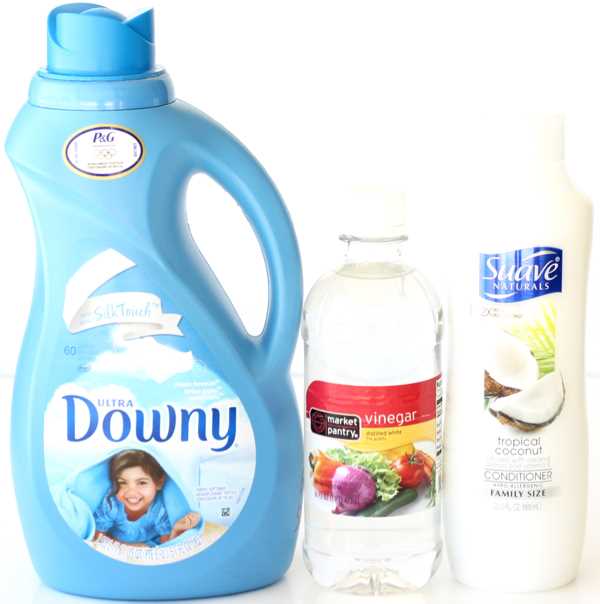
Vinegar can be a great alternative to traditional fabric softeners, providing a natural and cost-effective way to soften your clothes. Here are some simple steps to follow when using vinegar as a fabric softener:
1. Gather Your Materials
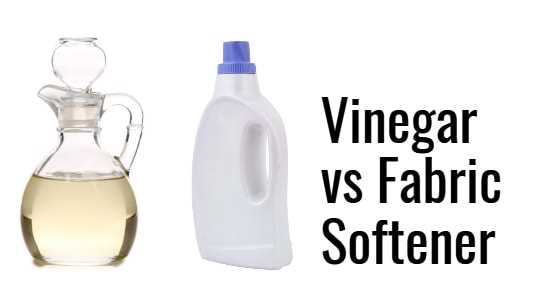
Before you begin, make sure you have the following materials handy:
- White distilled vinegar
- A measuring cup
- A plastic dispenser or spray bottle
- Your laundry detergent
- Your washing machine
2. Measure the Vinegar
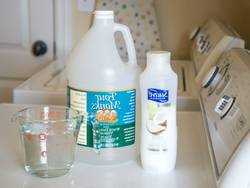
Measure out the desired amount of vinegar for your laundry load. A general guideline is to add about 1/4 to 1/2 cup of vinegar for a regular-sized load of laundry. Adjust the amount based on the size of your load or personal preference.
3. Add Vinegar to the Washing Machine
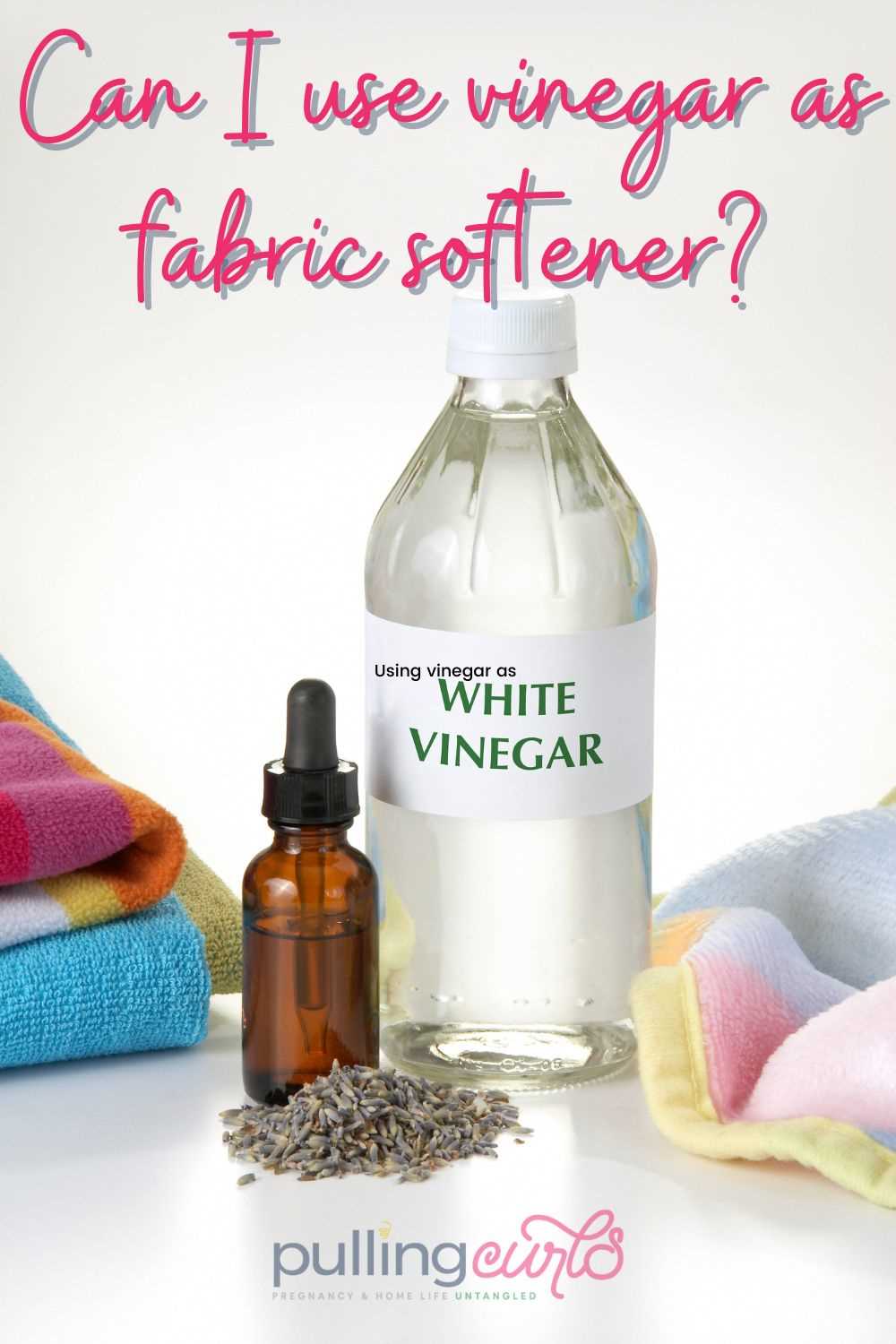
Pour the measured vinegar into the fabric softener dispenser of your washing machine. If your machine doesn’t have a dispenser, you can also pour the vinegar directly into the rinse cycle of the machine during the last rinse.
4. Add Detergent and Laundry
Add your regular laundry detergent as usual, along with your dirty clothes, to the washing machine. Make sure to follow the manufacturer’s instructions for the detergent dosage.
5. Start the Washing Cycle
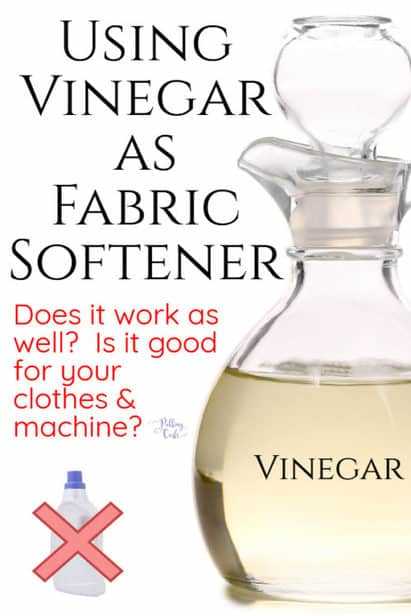
Close the lid or door of your washing machine and start the washing cycle. Choose the appropriate settings for the type of fabric and dirtiness of the laundry. The vinegar will be released during the rinse cycle and act as a natural fabric softener.
6. Dry and Enjoy Soft Clothes
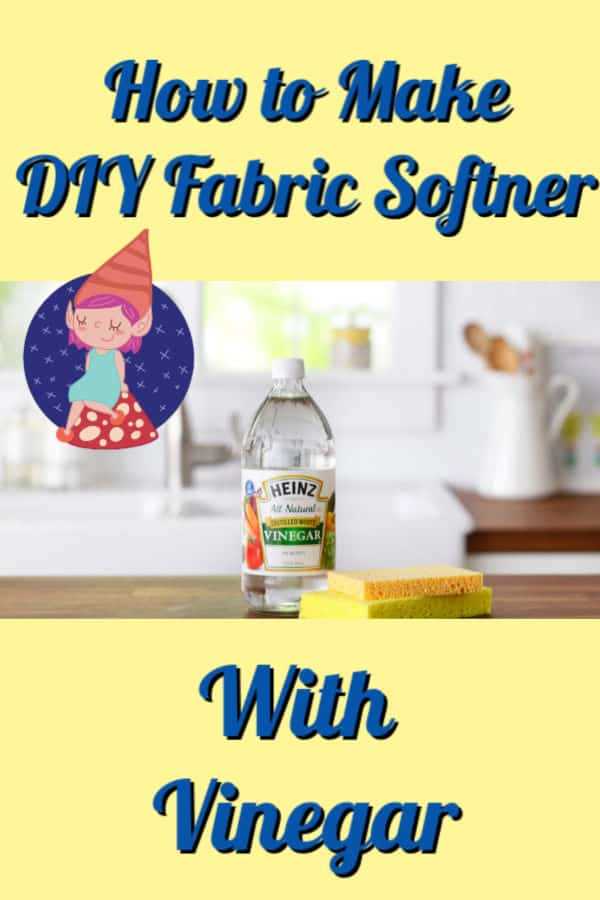
Once the washing cycle is complete, remove the clothes from the machine and dry them as you normally would. You’ll notice that your clothes come out soft and fresh, without the use of commercial fabric softeners.
By using vinegar as a fabric softener, you’ll not only achieve soft and clean clothes, but you’ll also save money and help reduce the use of chemicals in your laundry routine. Give it a try and enjoy the benefits of this natural alternative.
FAQ
What are the benefits of using vinegar as a fabric softener?
Using vinegar as a fabric softener has several benefits. Firstly, it is a natural and eco-friendly alternative to traditional fabric softeners, which often contain chemicals. Vinegar also helps to remove build-up of detergent residue on clothes, making them feel softer. Additionally, vinegar can help to reduce static cling in clothes, making them easier to handle.
Are there any downsides to using vinegar as a fabric softener?
While there are benefits to using vinegar as a fabric softener, there are also some downsides to consider. Firstly, vinegar has a strong smell which may not be pleasant for everyone. However, this smell does not usually linger on clothes once they are dry. Another downside is that vinegar may not provide the same level of scent that traditional fabric softeners do, so if you prefer heavily scented clothes, vinegar may not be the best option for you.
How do you use vinegar as a fabric softener?
Using vinegar as a fabric softener is easy. Simply add half a cup of white vinegar to the rinse cycle of your washing machine. Make sure to only use white vinegar, as other types of vinegar may stain your clothes. If you have a top-loading machine, you can also add the vinegar during the final rinse. If you prefer, you can also dilute the vinegar with water before adding it to the rinse cycle. Experiment with the amount of vinegar to find what works best for you.
Will using vinegar as a fabric softener damage my clothes?
No, using vinegar as a fabric softener will not damage your clothes. In fact, it can help to prolong the life of your garments. Vinegar is a natural and gentle alternative to traditional fabric softeners, which can sometimes leave a residue on clothes that can cause them to become stiff and fade over time. However, you should always check the care instructions on your clothes to ensure that vinegar is safe to use.
Can I use vinegar as a fabric softener for all types of fabric?
Vinegar can be used as a fabric softener for most types of fabric. However, there are some fabrics that may not react well to vinegar, such as silk or acetate. It is always best to check the care instructions on your clothes before using vinegar as a fabric softener. If in doubt, you can do a patch test on a small, inconspicuous area of the fabric first to see if any damage or discoloration occurs.











